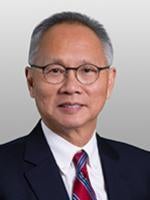Leaders of 19 countries and the European Union, known as the G20, met in Hangzhou, China, on September 4-5 to assess global trends and coordinate economic and financial policies. The first time G20 leaders gathered together was in Washington, D.C., in November 2008, in the throes of the international financial crisis of 2008-2009. It is generally acknowledged that the G20 played a significant role in pulling the world out of that crisis. This week, the G20 Summit was held in the wake of the British vote to leave the European Union (Brexit), rising protectionist sentiments in the United States, and increasing political tensions and conflicts in Asia, Eastern Europe and in the Middle East.
In his welcoming keynote address to the G20 leaders, China’s President Xi Jinping issued a strong warning about the state and direction of the world economy. “Today, eight years on, the global economy has again reached a critical juncture,” he said. “Economic globalization is suffering setbacks. Protectionism and inward-looking trends are on the rise.” “The global economy, while still on the road to recovery, faces multiple risks and challenges: weak growth momentum, sluggish demand, volatility in financial markets, and slow growth in international trade and investment.” Xi challenged the leaders, in response, to “make the G20 an action team, instead of a talk shop.”
So what did the G20 deliver in Hangzhou?
Potentially, the most notable achievement of this year’s G20 Summit might be the joint announcement by China and the United States that the two governments have formally ratified the Paris climate change agreement. This is a major step generating significant momentum in the UN effort to combat climate change because the two nations together produce nearly 38 percent of the world’s total carbon emissions. The Paris agreement must be ratified by at least 55 nations representing 55 percent of the world’s emissions to come into force. Although 180 countries have signed the agreement, only 26 (now including China and the United States) have ratified it thus far, accounting for about 40 percent of the world’s emission. This announcement is expected to encourage others, especially among the major G20 countries, to follow suit and bring the Paris agreement into force by the end of the year.
Apart from this breakthrough, it appears that the principle outcome of the G20 Summit was to call the world’s attention to the critical issues and trends facing the global economy today. In particular, IMF Managing Director Christine Lagarde called on global leaders to take “forceful” action to revive the world economy, noting that global economic growth had stagnated for five consecutive years below the 3.7 per cent average that prevailed between 1990 and 2007. Following Brexit, the IMF adjusted its global GDP forecast downward to 3.1 percent for 2016 and 3.4 percent for 2017. Lagarde warned of a “low-growth trap” accompanied by rising inequality that has led to increasing populism and rising trade barriers. “Pushing back against protectionism and pushing forward with free and fair trade is a vital component of this growth agenda,” she said. At the closing of the G20 Summit, Lagarde pointed to a consensus among G20 leaders that there must be more growth, and that it must be more inclusive. She echoed Xi’s words saying that urgent structural reforms need to be implemented, not just talked about.
At his closing press conference, President Obama also spoke about a G20 agreement to address the issue of excess capacity, particularly in the steel sector, by putting together a report with recommendations that will be presented to the next G20 Summit in Hamburg. He said there was a “validation of the basic principle that to the extent that overcapacity is the result not just of market forces but of specific policy decisions that are distorting a well-functioning market, that needs to be fixed.”
And U.S.-China Relations?
With respect to broader bilateral relations, President Obama said that President Xi and he agreed to advance cooperation, for example, on climate change, global heath and development, UN peacekeeping, counter-narcotics, and nuclear security. He also indicated, however, that there was a “clear, candid, direct and constructive” discussion of differences over issues like religious freedom, maritime security, and a level economic playing field. The White House Fact Sheet, released after the meeting on September 4, noted further that the two sides “reaffirmed their commitment to implement fully their September 2015 cyber commitments” and would “refrain from competitive devaluations.” On high-tech and digital trade, the two sides “commit not to unnecessarily limit or prevent commercial sales opportunities for foreign suppliers of ICT products or services,” to develop innovation policies “consistent with the principle of non-discrimination” and “not to require the transfer of intellectual property rights or technology as a condition of doing business in their respective markets.” The United States reiterated its commitment to encourage and facilitate export of commercial high technology items to China for civilian end-users and for civilian end-uses.” Finally, both sides cited “significant” progress in Bilateral Investment Treaty (BIT) negotiations and committed “to further intensify negotiations.”
In sum, G20 leaders in Hangzhou clearly recognized and acknowledged the serious challenges ahead for the global economy, especially slowing growth and rising inequality that is fueling protectionist sentiments across the world. What is not clear is whether there will be sufficient courage and will to tackle these challenges in the coming years, especially in view of the critical political and security issues that divide them.




 />i
/>i
